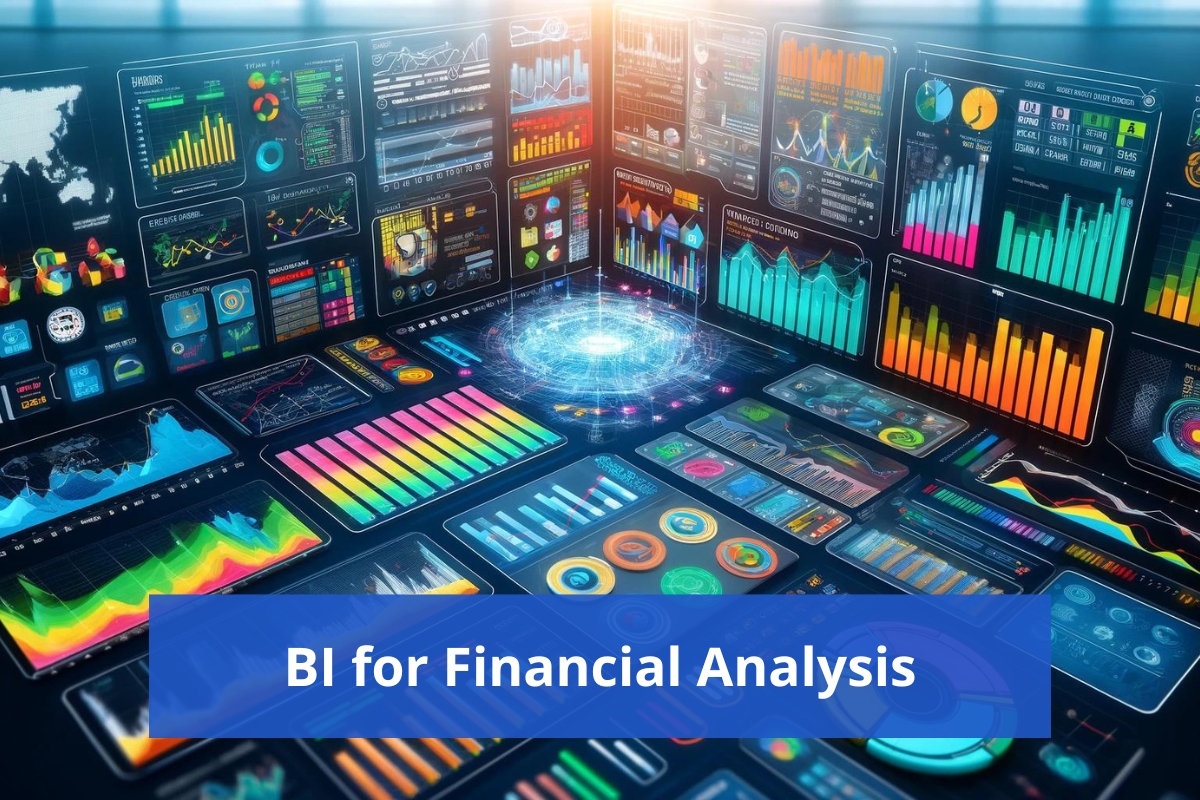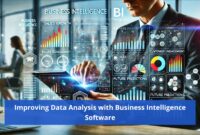In the realm of finance, decision-making is heavily dependent on timely and correct information. Business Intelligence (BI) systems have made the comparison analysis and evaluation of the financial trends more effective by enabling real-time analysis, better forecasting, and overall better strategic planning. Information of great importance is that with BI, financing becomes more than just numbers in excel sheets – it turns into a strategic benefit for an organization which lets it enhance its market position.
In this respect, the present paper aims to detail how BI is related to the analyses of an organization in finance, major processes involved, and the projects with BI tools why modern management with BI is important.
How is Business Intelligence Used in Financial Analysis?
A Business Intelligence (BI) is known to be a technology and knowledge oriented process that incorporates investigation of data and provision of knowledge that support management, executive, and other decision-makers. Summary Analytics, in support of Market Opportunity Analysis, uses BI tools, as financial information will be collected and analyzed in larger amounts and from different aspects.
BI tools provide the ability to analyze key financial data, revenue while incurring typical corporate expense, profitability, cash flow and budgets. As a result of both BI tools offering up to date information and advanced analytic potentials, BI solutions enable corporations to discover new tendencies, measure achievements and even predict eventual financial success.
Key BI Techniques for Financial Analysis
A number of BI techniques are very useful in the area of financial analysis. These techniques aid finance professionals in having a clearer view of their company’s financial position and taking decisions based on facts.
Live/ Updated Financial Dashboard
One of the primary advantages of BI is the possibility to develop live financial dashboards. Such dashboards represent information on the basic financial performance indicators, for instance, profitability, revenue generation, costs and other indicators. Dashboards do not only provide critical financial information to decision makers in an organization, but also enable monitoring of important metrics in a given time frame.
Dashboards come with features that allow the most important information to be shown to relevant departments and personnel, and also drill through the detailed financial information available. Such an ability to measure finance in such a manner is beneficial for the organizations since they will act very fast to any shifts that they may notice.
Budgeting and Forecasting
BI tools assist a great deal by improving the budgeting and fuzzy forecasting based on the trends established from previous details. With BI, financial analysts evolve into factors capable of predicting the future with varying degrees of accuracy through the analysis of previous results with respect to such factors as the state of the market, demand, and cost of production.
Predictive analytics is a characteristic of business intelligence (BI) that can be effective in predicting the financial performance of a firm in the future (Steward 8). BI enables organizations to employ predictive models that estimate how much revenue or costs will be incurred, and the level of profit likely to be achieved within a given time frame and under specified circumstances.
Profitability Analysis
In any case, it is important to identify what determines profit in a company, and BI enhances the analysis of that question by adding clarity for the revenues and the costs.Such BI can also analyze the profitability of the company by line of business, by customer or by region so as to know where the profit centers and loss centers are.
It gives companies the ability to strategize on the right price for certain products, how to design certain products or how to cut costs which may bring down the profitability level of the organization.
Financial Performance Tracking
Business intelligence software can efficiently complete this function by monitoring the key financial performance indicators (KPI) which usually relate to sales and expenses against budget such as gross profit, net profit, ROI as well as cash inflow. Many processes have been automated so that reports are generated automatically so finance people do not have to get up summoning and cutting and pasting in various data pages to prepare reports.
This fact also guarantees that decision-makers enjoy quick and correct financial data all the time. Thanks to such business intelligence-oriented financial performance monitoring strategies, it is possible to identify the presence of any financial problems or risks that may arise and take the necessary action to address them in real time.
Risk Management and Compliance
Financial data is often protected by law and compliance using BI tools can change an organization for the better by ensuring the release of adequate reports. BI tools can produce reports that take into account international regulation compliance, including the requirements of the Sarbanes-Oxley Act (SOX) or IFRS.
In addition, BI tools provide help in preventing risks by tracking probable risks such as a client risk or investors’ liquidity risk. Such analysis enables organizations to take measures to prevent business risks from developing into a crucial problem.
Cash Flow Analysis
Cash flow drives every business, and BI tools possess efficient features aimed at monitoring and analyzing cash flow instantly. With BI for cash flow analysis, companies will be able to track all cash movements like receipts and expenditures, predict future cash movements and improve the company’s working capital.
Additionally, it makes it easy for finance teams to realize when there are high liquidity situations or those of low liquidity, and this helps them plan when to invest, when to repay debt, and when to go looking for more funds.
Benefits of Using BI in Financial Analysis
The implementation of software and procedures for financial analysis increases the number of options available to the management regarding financial analysis and strategic management.
- Enhanced Decision-Making: The use of BI enables finance teams to have access to real time accurate data coupled with analytics which helps them in undertaking analysis and making decisions in an accurate and timely manner.
- Improved Accuracy: Automated data collection and reporting reduces the chances of committing human error hence elevating the precision of any financial reports submitted.
- Increased Efficiency: BI tools eliminate many of the manual activities required to carry out financial analysis such as, step by step data search, creating reports, tracking the performance, and others, which enables finance teams to be more strategic.
- Predictive Insights: Through its predictive analytics business intelligence enables an organization to determine certain financial predictions which are very helpful in planning and evading future risks.
- Greater Visibility: BI tools encompass dashboards and reports of companies providing top control information regarding the company’s financial well-being. Thus enables assessment and corrective action undertaken where necessary.
Conclusion
Business Intelligence, amply powered by technology in recent years, has swiftly established itself as an important component of financial analysis in terms of real time information, prediction and reporting tools that facilitate the decision making process. From cash flow analysis to profitability tracking and risk management, BI tools offer finance professionals the ability to transform data into actionable insights. In a competitive business environment, leveraging BI for financial analysis is not just an advantage—it’s a necessity for staying ahead.



